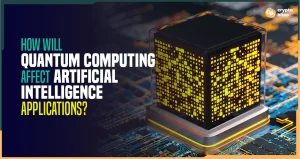
Breaking Down DeFi Governance Models: An Easy-to-Understand Guide
As a participant in the blockchain technology revolution, you’ve probably encountered Decentralized Finance or DeFi. This emerging concept has gained tremendous popularity and is challenging the traditional financial system with its innovative alternative. With approximately $75 billion currently locked in DeFi platforms, the numbers are projected to reach an all-time high by year’s end.
So, what’s driving DeFi’s success? Its inherently fair and transparent nature, the absence of a central governing body, and the complete independence of its decision-making processes. The governance of DeFi systems is a blend of flexibility and security with a splash of community involvement and innovation.
Understanding DeFi Governance
Without a central authority, there’s a risk of breaches and regulatory non-compliance in a DeFi model. Enter the DeFi governance system – a network of individuals responsible for decision-making in the DeFi model’s best interest. Their goal? To create a supportive and responsive ecosystem that meets diverse needs.
What sets DeFi governance apart? Every user can contribute their ideas on system operations and propose changes, making community participation integral to the success of a DeFi model. In reality, DeFi governance isn’t monolithic; it manifests in numerous models, each tailored to the unique needs and characteristics of the platform. From simple voting to complex liquid democracy models, the governance structures are as diverse as they are innovative.
DeFi Governance: From Past to Present
DeFi’s evolution has been driven by the innovative potential and robust decision-making it offers. However, it has had its share of challenges. For instance, the hacking of the Solend platform and a bug in the Mango Markets exchange, both in 2022, underscored the necessity of solid governance in DeFi.
DeFi governance was born with the launching of the earliest DeFi projects, like Ethereum and Bitshares, between 2014 and 2016. They relied on simple voting mechanisms, but as the ecosystem evolved, token-based governance became necessary. The subsequent growth saw the emergence of liquid democracy and quadratic voting in 2020, encouraging better community participation and decision-making.
Exploring DeFi Governance Models
Let’s delve deeper into the popular DeFi governance models:
- One-Token, One-Vote System: A traditional approach where every token holder has one vote, regardless of their token count. Uniswap and MakerDAO are examples of platforms utilizing this model. However, the model has challenges, such as the risk of centralization, voter apathy, and lack of accountability.
- Quadratic Voting: This model allows token holders a set number of voting credits to distribute across proposals, potentially at higher costs for significant allocations. The quadratic voting approach is instrumental in fostering diversity and expressive decision-making, with Gitcoin being a notable platform using it.
- Limited Governance: This model focuses on specific parameters instead of the whole decision-making process, limiting the requirement of coordination between vote holders. It establishes a balance between efficiency and decentralization, with Compound being a successful implementer.
- Proof of Participation (POP): The POP model encourages active user participation in decision-making, rewarding participation points to increase voting power. Aragon is a popular platform that benefits from this model.
The Future of DeFi Governance
As the DeFi sector evolves, the way in which decisions are made will also need to adapt. This implies the development of governance models that can scale effectively, include all participants, and mitigate centralization risks. In light of this, DeFi protocols may increasingly adopt hybrid models, blending elements of direct voting, representative voting, and even algorithmic methods.
Moreover, the interplay between various DeFi protocols will necessitate “interoperable governance,” fostering collaboration and symbiotic relationships between platforms. Finally, with the continued advancement of smart contracts and automation, the administration of these protocols could become increasingly efficient and robust.
The growth and maturation of DeFi governance will be an essential factor in determining the success of decentralized finance as a whole. It’s an exciting frontier with significant potential to revolutionize our interactions with financial systems.
F.A.Q.s
1. What is DeFi (Decentralized Finance)?
DeFi stands for decentralized finance. It’s a blockchain-based form of finance that doesn’t rely on central financial intermediaries such as brokerages, exchanges, or banks. Instead, it utilizes smart contracts on blockchains, most commonly Ethereum.
2. What does Total Value Locked (TVL) mean?
TVL refers to the total value of assets currently staked in a specific protocol. It’s a commonly used metric to gauge the relative size of different DeFi projects.
3. What is DeFi governance?
DeFi governance refers to the decision-making processes in a DeFi system. Since there is no central authority, decisions such as protocol upgrades and changes to system parameters are often made collectively by the community through a voting process.
4. Why is governance necessary in a DeFi system?
Governance in a DeFi system is necessary to prevent illicit activities, ensure fairness, and meet the diverse needs of its users. It also promotes transparency and allows all participants to have a say in the system’s operation.
5. What is a one-token, one-vote governance system?
This is a simple governance model where each token holder gets one vote, regardless of how many tokens they hold. This model is straightforward to understand and implement, but it can lead to centralization of power and low voter turnout.
6. What is Quadratic Voting?
Quadratic Voting is a more advanced voting system where token holders are given a set number of voting credits to distribute among different proposals. The more votes allocated to a proposal, the higher the cost. This system aims to reflect the preference of token holders more accurately.
7. What does Limited Governance mean?
Limited Governance refers to a governance model where token holders can only decide on specific parameters while the platform’s development team handles the rest. This system allows a balance between efficiency and decentralization.
8. What is the Proof of Participation (POP) model?
The Proof of Participation model rewards active token holders with additional voting power, encouraging them to engage more in the protocol’s activities. This governance model keeps decision-making inclusive and decentralized.
9. What are some of the current challenges in DeFi governance?
Current challenges in DeFi governance include a need for scalability, centralization risks in some voting systems, and a lack of collaboration between different governance models. The future of DeFi governance aims to overcome these issues through the use of smart contracts, automation, and implementing more inclusive governance models.
10. How can one choose the right DeFi platform?
When choosing a DeFi platform, it’s crucial to understand the governance model used and its implications. Then, make sure the platform aligns with your values, preferences, and requirements.




